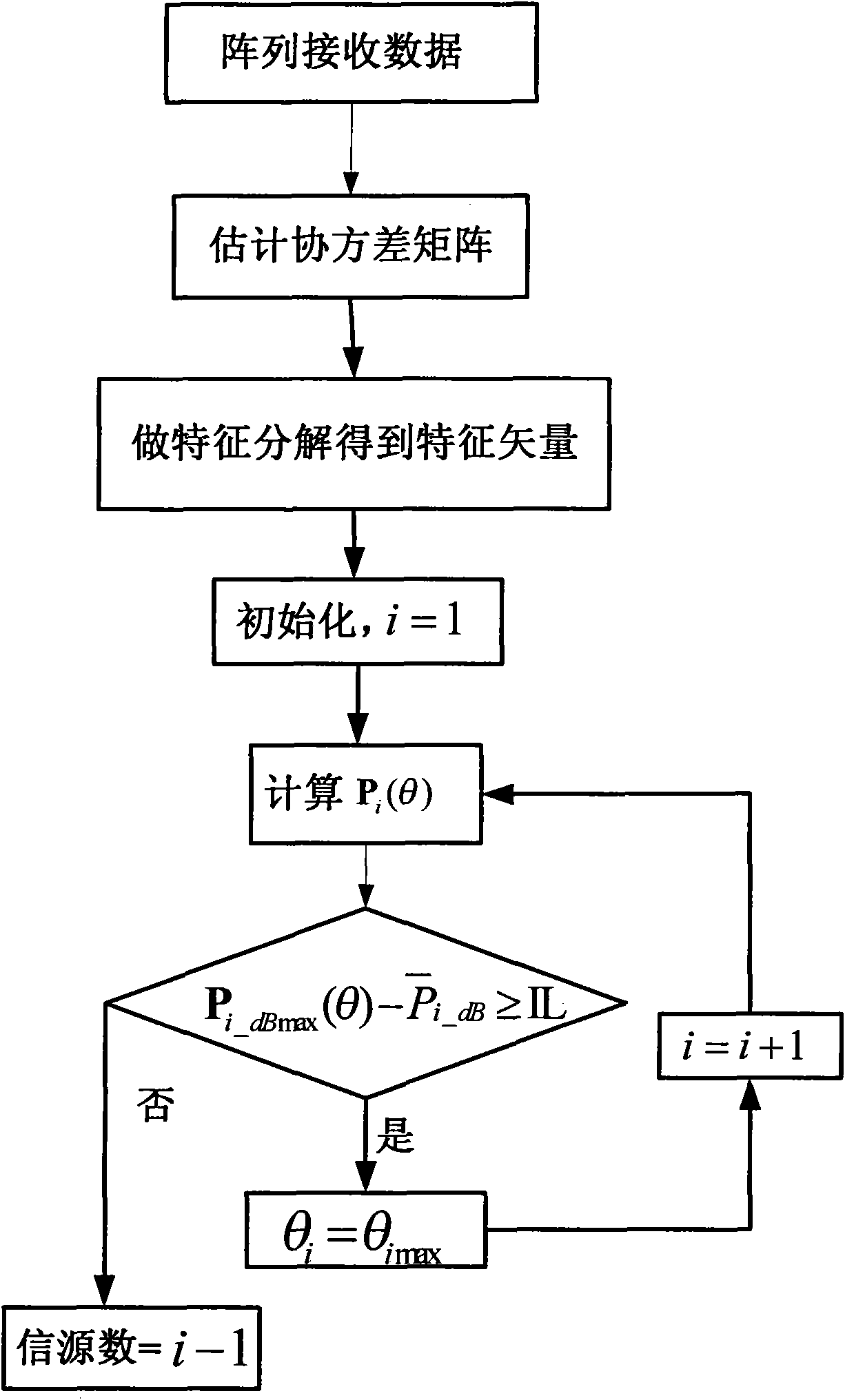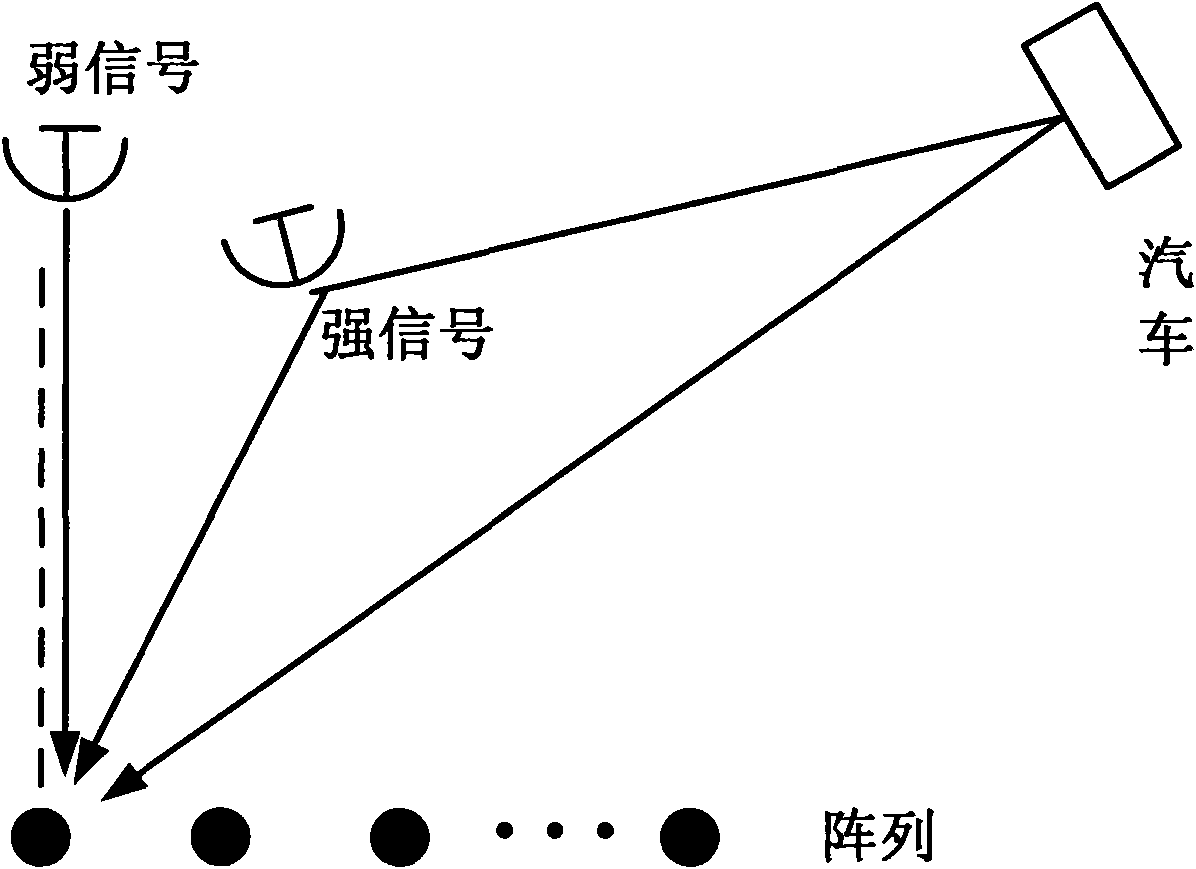Method for estimating direction of arrival and information source number of strong and weak signals
A technology of direction of arrival and number of sources, which is applied in the field of spatial spectrum estimation, can solve the problems of large amount of computation, difficulty in estimating the number of sources, fluctuation of direction finding performance, etc., and achieve the effect of small amount of computation and simple calculation
- Summary
- Abstract
- Description
- Claims
- Application Information
AI Technical Summary
Problems solved by technology
Method used
Image
Examples
Embodiment Construction
[0035] refer to figure 1 , the implementation steps of the present invention are as follows:
[0036] Step 1, according to the received data x(t) of the antenna array, estimate its covariance matrix for:
[0037] R ^ x = 1 N Σ t = 1 N x ( t ) x H ( t )
[0038] Wherein, t=[1, 2, . . . , N], N is the number of sampling snapshots, and H represents a conjugate transpose operation.
[0039] Step 2: For the covariance matrix Perform eigendecomposition to obtain eigenvalues and corresponding eigenvectors:
[0040] [ U , Λ ] = eig ( R ...
PUM
 Login to View More
Login to View More Abstract
Description
Claims
Application Information
 Login to View More
Login to View More - R&D
- Intellectual Property
- Life Sciences
- Materials
- Tech Scout
- Unparalleled Data Quality
- Higher Quality Content
- 60% Fewer Hallucinations
Browse by: Latest US Patents, China's latest patents, Technical Efficacy Thesaurus, Application Domain, Technology Topic, Popular Technical Reports.
© 2025 PatSnap. All rights reserved.Legal|Privacy policy|Modern Slavery Act Transparency Statement|Sitemap|About US| Contact US: help@patsnap.com



